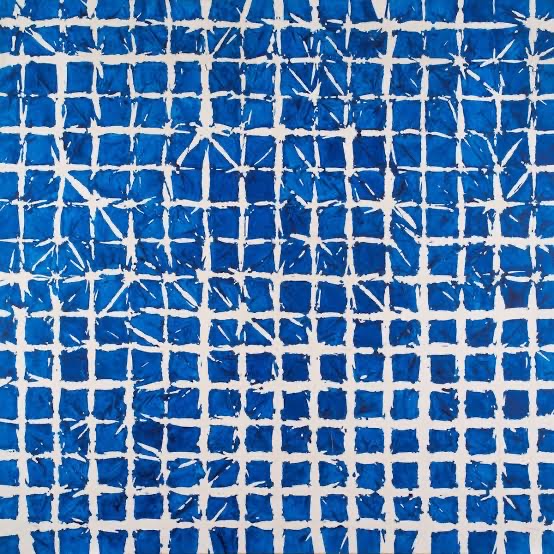Parigi d’estate: Simon Hantaï e Antoni Gaudí
L'astrattismo di Simon Hantaï e il modernismo di Antoni Gaudì rendono irrinunciabile un viaggio a Parigi. C'è tempo fino a metà luglio per Gaudì e a fine agusto per Hantaï.

L'astrattismo di Simon Hantaï e il modernismo di Antoni Gaudì rendono irrinunciabile un viaggio a Parigi. C'è tempo fino a metà luglio per Gaudì e a fine agusto per Hantaï.

(English translation below)
La città di Parigi ospita due mostre imperdibili in questi mesi estivi.
Parigi, cuore non solo della Francia ma anche dell’Europa e di una scena artistica più inclusiva e progressista, è all’avanguardia in questo periodo di rinascita artistica post-Covid. In una sede moderna e un’altra più storica, la Fondation Louis Vuitton e il Musée d’Orsay, Parigi ci solletica con due eccezionali mostre.
E’ già aperta fino al 29 agosto alla Fondation Louis Vuitton di Parigi l’esposizione Simon Hantaï: La mostra del centenario per celebrare il centenario dalla nascita dell’artista ungaro con i capolavori di un’artista dai molti talenti e pochi riconoscimenti. Lo sguardo dello spettatore dovrà spostarsi da destra a sinistra, su e giù per la particolare struttura architettonica della Fondazione, sottolineando l’attenzione alla prospettiva e la retrospettiva, nel re-immaginare i capolavori dell’artista Simon Hantaï cento anni dopo la sua nascita.
La mostra, curata da Anne Baldassari, presenta più di 130 pezzi di Simon Hantaï, alcuni dei quali non sono mai stati esposti al pubblico. Intorno alle sue opere sono in mostra anche altri grandi artisti del suo secolo che ebbero un impatto sullo sviluppo dello stile artistico di Hantaï, come Henri Marisse e Jackson Pollock.
L’auspicio di questa mostra è che il genio artistico di Simon Hantaï possa essere riscoperto e riconsiderato decenni dopo la sua creazione, non solo per rimanere attivi nel rapporto con l’arte, ma anche per donare speranza alle opere create in tempi di Covid.
In una casa, su un prato o in uno studio, molti capolavori rimangono invisibili in questo periodo di transizione: questo istante ricorda che il mondo dell’arte è malleabile, un grido nel tempo.
Sempre a Parigi, al Musée d’Orsay, fino al 17 luglio, l’eccentrico architetto spagnolo Antoni Gaudí è il protagonista di una grande mostra dedicatagli dalla Francia in più di cinquanta anni.
La mostra racconta la creatività dell’artista, la sua importanza negli sviluppi politici della Catalogna alla fine del diciannovesimo secolo, presentando pezzi mai esposti prima, e andando a costruire un’esperienza museografica immersiva.
La mostra racconta il percorso di Gaudí nel movimento locale del modernismo, un desiderio di mostrare un’identità catalana diversa, separata. Nello sfidare le tendenze culturali dei suoi dintorni, Gaudí avanza una critica del suo contesto politico e sociale, ricordando il potere dell’arte nella lotta per la propria rappresentazione.
Attraverso disegni e piccoli modelli di mobili, lo spazio e i colori, centrali per l’artista, sono onnipresenti: una continuità nel cambiamento e progresso dell’artista.
Perché vi propongo proprio queste due mostre a Parigi? Perché suscitano domande interne, quasi subconscie, sul ruolo dell’individuo in un momento nel quale il mondo ha fortemente bisogno di questo attivismo.
ENGLISH VERSION
The city of Paris hosts two unmissable exhibitions in these summer months.
Paris, the heart not only of France but also of Europe and of a more inclusive and progressive art scene, is at the forefront of this post-Covid artistic renaissance. In a modern location and a second more historic one, the Fondation Louis Vuitton and the Musée d’Orsay, Paris tickles us with two exceptional exhibitions.
The exhibition Simon Hantaï: The centenary exhibition to celebrate the centenary of the birth of the Hungarian artist with the masterpieces of an artist of many talents and few awards is already open until 29 August at the Fondation Louis Vuitton in Paris.
The viewer’s gaze will have to move from the right to the left, up and down the architectural structure of the Foundation, emphasizing the attention to perspective and retrospective in re-imagining the artist’s masterpieces one hundred years after his birth.
The exhibition, curated by Anne Baldassari, features more than 130 pieces by Simon Hantaï, some of which have never been available to the public. Around his works are exhibited other great artists of his century who had an impact on the development of the artistic style of Hantaï, such as Henri Matisse and Jackson Pollock.
The hope of this exhibition is that Simon Hantaï’s artistic genius can be rediscovered and reconsidered decades after its creation, not only to remain active in the relationship with art, but also to give hope to the works created in Covid times.
In a house, on a field, or in a studio, many masterpieces remain invisible in this period of transition: this moment reminds us that the world of art is malleable, a scream in time.
Also in Paris, at the Musée d’Orsay, until July 17th, the eccentric Spanish architect Antoni Gaudí is the protagonist of a major exhibition dedicated to him by France over more than fifty years. The exhibition tells the artist’s creativity, and his importance in the political developments of Catatonia at the end of the nineteenth century, presenting pieces never exhibited before, constituting an immersive museographic experience.
The exhibition recounts the path of Gaudí in the local movement of modernism, a desire to show a different, separate Catalan identity. In challenging the cultural trends of his surroundings, Gaudí makes a critique of his political and social context, recalling the power of art in the struggle for its own representation.
Through drawings and small furniture models, space and colours, central to the artist, are omnipresent: continuity in the artist’s change and progress.
Why am I proposing these two exhibitions to you? Because they raise internal, almost subconscious questions about the role of the individual at a time when the world is in dire need of this activism.
